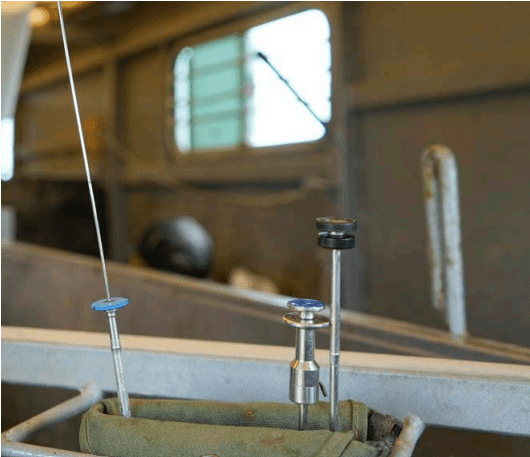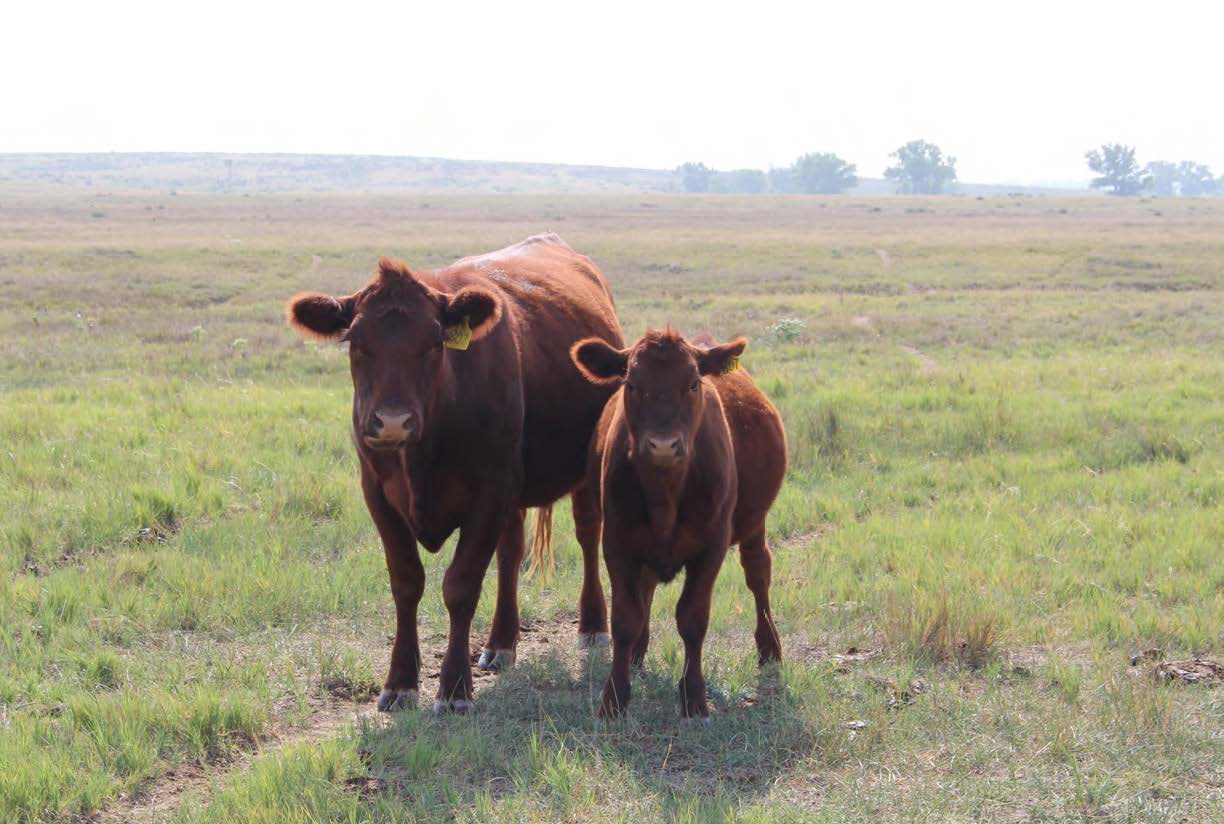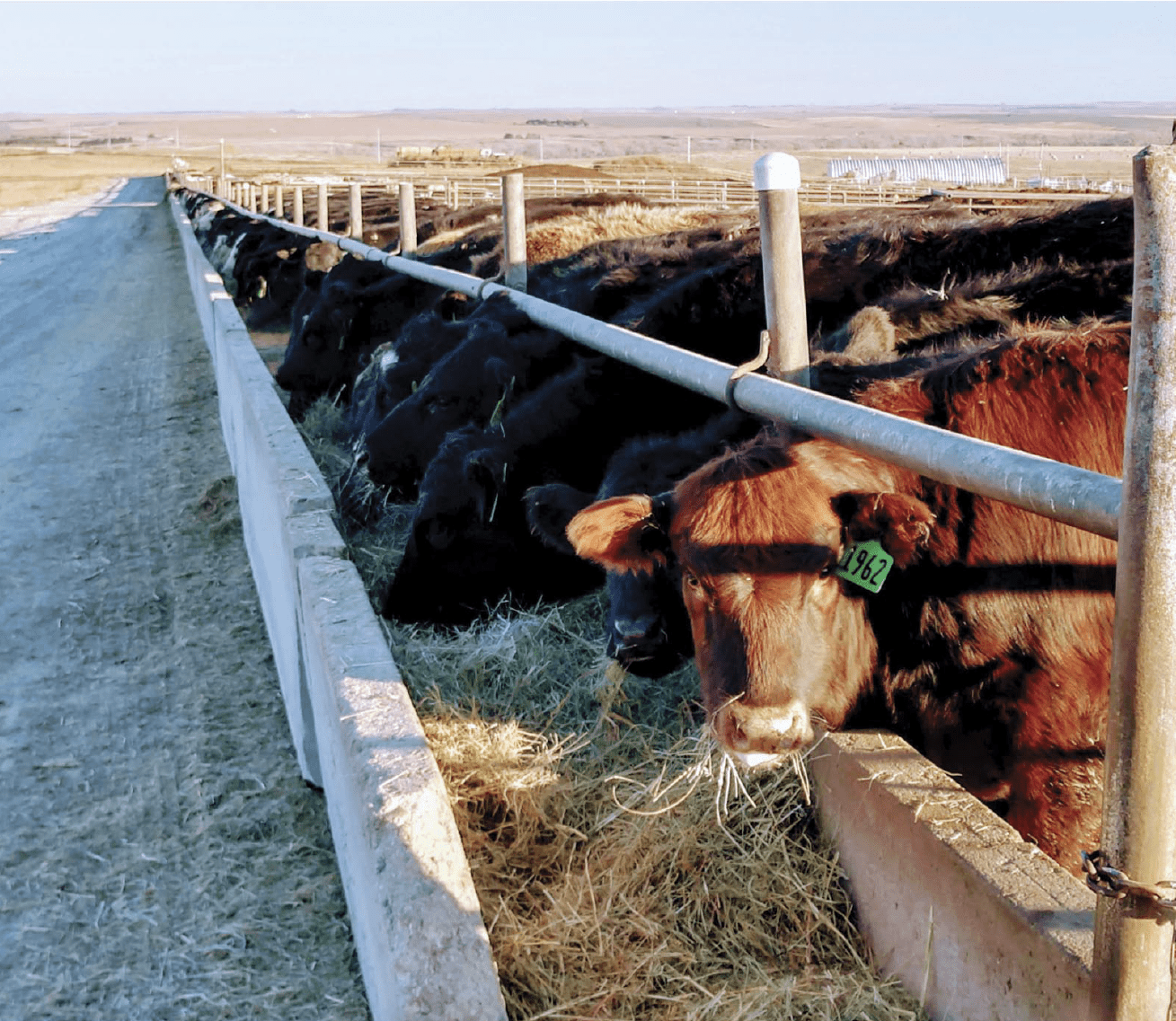

At times, weather, politics, and other factors outside our control can be frustrating to the livestock industry.
However, despite all that, the future has never been brighter for what cow-calf producers can accomplish with reproductive technology tools now available.
The most powerful reason to use artificial insemination (AI in my world) is the cost-effective access to a wide range of genetic choices with high accuracy.
And now, genetic selection tools have been improved with genomic data, EPDs are increasingly available for functional traits as well as growth and carcass traits, and breed associations have created several selection indexes to help simplify the process of selecting for multiple traits.
A step up from weaning and yearling ratios of my childhood.
Sexed semen is readily available and the genetic options far exceed the handful of bulls initially offered.
Seedstock producers can generate embryos in vivo and in vitro with the end result of increasing the genetic reach of superior females.
Cow-calf producers that want to move beyond commodity marketing have options to tie their production to a supply chain via genetics and/or management.
At the backbone of all these things are estrus synchronization and AI. National Animal Health Monitory Surveys indicate that AI and estrus synchronization use is higher in heifers than cows and in herds with 200 head or more.
This is not surprising for several reasons. Use of high accuracy calving ease sires minimizes risk of calving difficulty while still allowing for good growth rates.
Given ever-rising input costs, anything that can be done to reduce risk and improve returns associated with first-calf heifers is beneficial to the bottom line.

We still refer to it as synchronization of estrus, but today’s systems synchronize ovulation and control both the presence of corpora lutea (CL) and follicular waves allowing fixed-time AI, so that an entire group of females can be inseminated on the first day of the breeding season.
This translates to an added advantage that females could have 3 chances to conceive by 45-50 days of the breeding season.
Cows that calve early in the breeding season one year have more time to resume cycling before the start of the next breeding season compared to later calving cows.
Depending on the initial calving distribution, gradual improvements in AI pregnancy rates are often seen over several years of estrus synchronization use, as more and more cows are calving early and have ample time to resume cycling before the start of the breeding season.
Benefits of synchronization for the cow also apply to the calves that are older and heavier at weaning and tend to be more uniform in size.
The Beef Reproduction Task Force, a multi-state extension group, along with a larger group of allied industry personnel known as the Beef Reproduction Leadership Team, have worked together to provide a uniform set of recommended protocols for synchronization of estrus and ovulation.
These recommendations reflect available research and knowledge of how these systems work in a wide variety of settings.
There are many protocols that have been evaluated, but the BRTF list is intended to direct producers to a short list that minimizes animal handlings and deliver consistent results.
There are different protocols and timing recommendations for cows and yearling heifers.
Insemination timing is earlier for heifers than cows, for some shared protocols, and heifers are less consistent in their response to GnRH treatments.
Current protocol recommendations can be found at beefrepro.org/protocols/ and are grouped as follows:
• Cows – Heat Detection and Timed AI
• Cows – Fixed-Time AI
• Heifers – Heat Detection and Timed AI
• Heifers – Fixed-Time AI
• Sexed Semen
• Heat Detection
• Natural Service

Some of the systems for use with heifers start a month prior to the planned breeding date.
These systems work very well but do require more advanced planning. The Estrus Synchronization Planner is a free tool found at BeefRepro.org/resources that will develop a calendar to ensure users know what should be done and when on each day of a protocol.
For fixed-time AI systems, the timing in hours between the last prostaglandin injection and timed AI are important and the Planner will show you if your inputs result in timed-AI at 2 AM rather than 2 PM.
Deciding on which protocol to use involves several decisions by the manager.
If the primary goal is to use AI sires with little emphasis on reducing the days devoted to heat detection, something from the heat detection list is the way to go.
Results are highly dependent on diligent heat detection. A more common approach is to heat detect for a few days and then at the end of a pre-determined time, AI all remaining females and administer GnRH.
This approach spreads out inseminations which is appropriate for individuals that don’t routinely do a lot of palpation or AI and may get arm fatigue before the supply of cows in estrus runs out.
An approach used by experienced technicians and when hiring AI service is a single fixed-time AI. All cows/heifers are inseminated at a pre-planned time.

Heat detection and the AM/PM rule can be used with any of the synchronization protocols. Split-time AI adds one more planned AI time compared to fixed-time AI.
Using the 7-Day CO- Synch +CIDR in cows as an example of split-time AI, at 66 hours after PG, all cows in heat at that time are inseminated and 20-24 hours later the remaining cows are inseminated.
Any females that have not shown estrus by that point receive GnRH at the time of insemination. Use of some type of heat detection aid with split time AI or other protocols involving heat detection is relatively inexpensive and a good investment that makes split-time AI much easier.
Results with sexed-semen are improving but still do not match conventional semen in most cases.
Using sexed-semen on females known to be in heat is highly recommended. A split-time AI approach is a good way to incorporate sexed semen by using sexed semen on females that are in heat and conventional semen and GnRH on non- responders.
Producers can get the benefits of synchronization and still use natural service sires.
In many cases, a bull to cow ratio of 1:20 to 1:25 with experienced, fertility tested bulls 2 years of age or older will provide adequate bull power.
This approach could be step one in starting an AI program.

Routinely, people are looking for a tweak or change in an estrus synchronization protocol to improve their results to AI.
However, the single most important step to successful reproduction is sound year-round nutrition and feeding based on actual cow weights.
Either too little or too much can have negative consequences on performance and profitability.
Target cows to be in a body condition score of 5 and first calf heifers 5.5 to 6 at calving.
Both groups should be on an increasing plane of nutrition going into the breeding season.
Protein and energy are major drivers to reproductive performance and should not be overlooked for the miracle supplement promising to solve all problems
It is doubtful that AI use in the beef industry will ever be as extensive as that of the dairy industry.
However, those that elect to incorporate reproductive technology will have quicker access to high value genetics and will be able to shift genetic directions easier based on market demand signals.
In the future, consumers may continue to demand premium choice and prime cuts of meat plus something innovation has yet to identify.
Reproductive technology will be the gateway to incorporating that new innovation in your cow herd.
 Dr. Sandy Johnson, a reproductive physiologist and extension beef specialist at the NW Research and Extension Center in Colby, KS, for K State Research and Extension, was raised on a diversified livestock operation in eastern Nebraska. She received advanced degrees in Reproductive Physiology from the University of Missouri and West Virginia University. Johnson is a founding member of the Beef Reproduction Task Force, collaborating with allied industries to establish unified guidelines for estrus synchronization protocols. Major outreach efforts are the Applied Reproductive Strategies in Beef Cattle annual meeting and the BeefRepro.org website.
Dr. Sandy Johnson, a reproductive physiologist and extension beef specialist at the NW Research and Extension Center in Colby, KS, for K State Research and Extension, was raised on a diversified livestock operation in eastern Nebraska. She received advanced degrees in Reproductive Physiology from the University of Missouri and West Virginia University. Johnson is a founding member of the Beef Reproduction Task Force, collaborating with allied industries to establish unified guidelines for estrus synchronization protocols. Major outreach efforts are the Applied Reproductive Strategies in Beef Cattle annual meeting and the BeefRepro.org website.
Get all Doc Talk episodes straight to your email inbox!